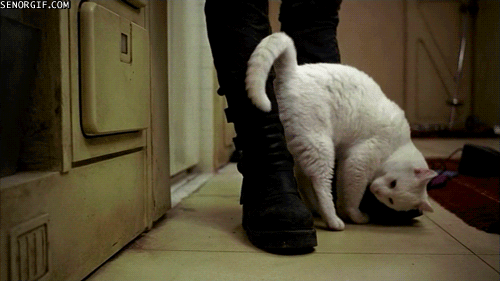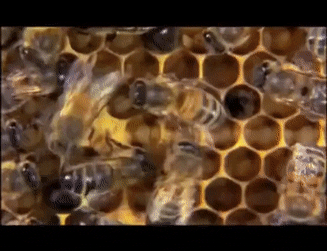你好!
我們家的貓目前沒有這種行為,但是我記得它們很小的時候是有這種行為的,因為我有不小心被絆倒的記憶(黑線)……現在沒有可能是因為體型變大了不方便,它們現在采取得更多的行為是輕輕蹭我的腿側或者在我面前叫喚。

所以貓的這種行為應該是有普遍共性的,它的主要目的肯定有留下氣味,但這可能並非是最主要的目的,貓「透過留氣味的方式來操縱人類以獲取自己需要的資源」,才是真正的目的。知乎曾有篇科普描述了這種行為:
對貓蹭腿這一行為有描述的研究還是不少的:
所以,貓用這種要命的方式,並不只是為了標記你,還是為了引起你的註意,從中得到好處。

行為學上把貓咪旋繞/摩蹭人類的這一行為, 統稱為社交型觸覺尋求行為 (Social Tactile-Seeking Behavior),這一行為目的在於引起人類的社互動動,如撫摸、玩耍和獎賞。許多研究如Vitale Shreve和Udell(2015)、Schötz(2019)都觀察到這一行為與人貓互動密切相關,表達了貓咪對觸覺刺激的需求,是貓咪主動尋求人類註意和互動的一種手段。Bradshaw等(2000)提出,這一行為源自貓咪作為一個社會物種對其領地內其他社會夥伴的互動需求。家養環境下, 人類取代了其他貓咪,成為這一需求的物件。
這種行為與蜜蜂的8字舞(waggle dance)有什麽聯系呢?

有,但不是很大。
蜜蜂的8字舞蹈(waggle dance)是一種象征性的交流行為。當蜜蜂在蜂巢內進行這種舞蹈時,它會傳達食物源的方位和品質資訊給其他蜜蜂,這使得整個蜂群能夠迅速且高效地采集食物。所以這兩個行為都起源於一種社互動動需要,但不同的是貓是為了尋求人類註意和互動,蜜蜂是為了傳達資訊。

Bradshaw, J. W., Casey, R. A., & Brown, S. L. (2000). The behaviour of the domestic cat. CABI.
Vitale Shreve, K. R., & Udell, M. A. (2015). What's inside your cat's head? A review of cat (Felis catus) cognition and cognition testing. Animal Cognition, 18(4), 823-833.
Stanton LA, Sullivan MS, Fazio JM. A standardized ethogram for the felidae: A tool for behavioral researchers. Applied Animal Behaviour Science. 2015 Jan 1;163:3-16.
Schötz, S. (2019). Play behavior in cats—A review. Journal of Feline Medicine and Surgery, 21(1), 53-60.
McComb, K., Taylor, A. M., Wilson, C., & Charlton, B. D. (2009). The cry embedded within the purr. Current Biology, 19(13), R507-R508.
Jensen, P. (2007). The ethology of domestic animals: an introductory text. CABI.
Schötz, S., & van de Weerd, H. (2019). Effects of owner interaction on the behavior of confined cats. Animals, 9(11), 931.
Bradshaw J.W., et al., Comparing the behaviour of domestic cats and dogs, Anthrozoos, 23(1)(2010), 37-47.
Cafazzo S, Natoli E., Evolution of behavioural and physiological responses of dogs and cats to petting by humans., Anthrozoos, 22(3)(2009),259-265.
Ichikawa A., Understanding the mechanism for cat kneading behavior: motivation and meaningfulness of behavior., Animal Sci J. 86(4)(Apr 2015):355-61.











